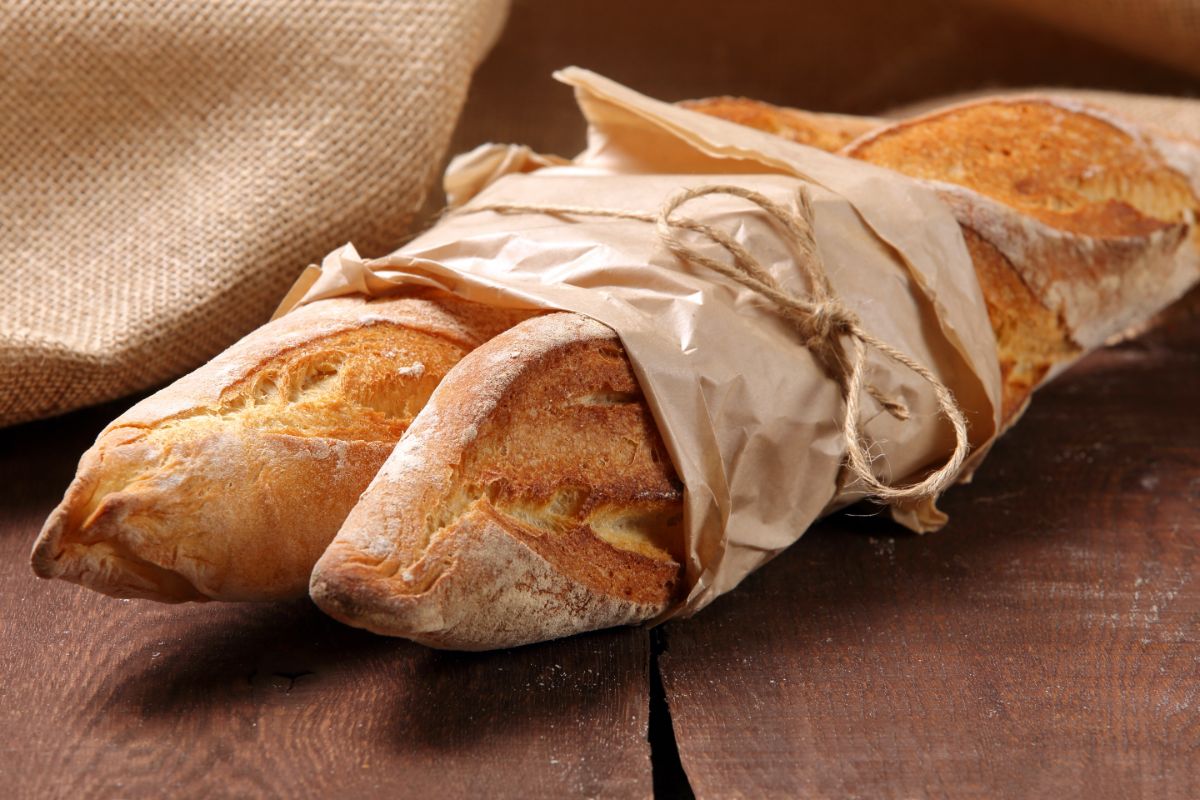There’s nothing more frustrating than the aroma of freshly baked Baguette bread. This classic French loaf is characterized by a long crispy crust. Unfortunately, it’s hard to retain the crispiness after a day. If you want to enjoy the French bread, you should eat it the day it’s baked.
So, how do you keep baguette bread soft? There are a few things you should do to keep your baguette bread soft. The way you store the bread matters. Just wrap it in a plastic bag to trap moisture. This will make the bread soggy, especially if you won’t eat the entire baguette.

Alternatively, you can wrap the bread with an aluminum counterfoil. Fold the sides of the foil and tuck the ends. If you plan to freeze the bread, you may want to cut it in half before you keep it in the freezer.
But there is a caveat to this trick. You should ensure the bread is at room temperature. If you wrap baguette bread when still hot, the bread will spoil faster. When the bread is frozen, you should use it within a few days.
Another way of making your Baguette bread soft is by storing it in a bread box. It increases air circulation and balances the humidity levels. Use a large box and don’t overfill it. Avoid storing the box in a paper bag because it may trap moisture.
The best conditions to keep your Baguette bread soft
Have you ever craved a piece of baguette bread only to realize that it’s hard? Well, you can make the bread tasty again. When you pull the bread from the oven, you should place it on a rack with plenty of space.
This will ensure it collects enough steam and becomes soggy. Once the moisture gets into the bread, it will keep cool.
Does Baguette bread get hard because it’s made of lean dough?
Baguette bread is made of four main ingredients: flour, salt, water, and yeast. Because no oil is used, the bread gets hard within a few hours.
While there are many ways to preserve the texture, the bread is best enjoyed while still warm. That being said, the shelf life of French bread is not determined by the dough. When you remove the bread from the oven, the steam disappears making it hard.
Baguettes made with a starter or preferment don’t get stale quickly. When you allow the beneficial enzymes to form, the bread will become resistant to mold.
These enzymes also help to preserve the bread. Most bakers use a secret powder to make the bread last longer. The other factor that makes the bread hard is how you make the dough.
It’s recommended that you prepare the dough 10-12 hours before baking. The technique you use to combine the ingredients also matters. If you want to make your baguette softer, you should knead the dough for two minutes, let it rest for 7 minutes, and then knead again. The resting period allows the gluten to do the magic resulting in a smoother dough.

When you make the dough into bread, you should seal the ends tightly. This creates surface tension, so the dough expands out evenly.
If you don’t create the surface tension, the dough will go flat. Finally, you should consider using a pizza stone. It radiates the heat evenly resulting in a thick baking sheet of bread.
Also, you can use an oven with a built-in steamer. Just bring the water to a boil using the steamer and pour it into the pan. Place your bread into the steamer basket and close the rid. Leave it on for about 2-10 minutes to soften the bread.
How to revive hard Baguette bread
If you don’t know how to keep your bread soft once you get it out of the oven, you could be fighting a losing battle. The first step is to heat the baguette for 10-15 minutes and run tap water over it.
If you’ve already cut the bread, make sure the water does not get in the sides. This will help to add moisture and bring the bread back to life. After that, place the bread in the oven at 400 degrees F for 10-15 minutes.
This ensures the bread is crispy again. Uncover the bread and return it to the oven for another 15 minutes to make it crusty. Next, slice the bread and make toast. If you don’t have a toaster, arrange the slices of the baking sheet and place them under a broiler.
The other way is to cut the baguette into smaller sizes coat it with vinegar or olive oil and make a salad. It gets better if you cook the baguette cubes until they are crunchy.
You’ll be amazed by how quickly the bread comes to life again. Since the bread has a shorter shelf life, you should eat it within 30 minutes.
If you don’t fancy any of the above tricks, you can use the microwave method. This is arguably the easiest way to make the hard baguette bread soft.
Simply dip a clean dish towel in water, wring out the excess water, roll up the baguette, and fold all the edges. Use a high setting to heat the microwave for about 20-30 seconds until it gets soft. Remember, there’s no fat in the bread that can create a chewy texture.
Simple ways to use hard Baguette bread
You already know that baguettes get hard in a matter of hours. If you prepared your French bread last night, it will be hard in the morning.
But does that mean that you throw it away? The simple answer is No. There are clever ways to make use of the bread. The best way to utilize hard baguette bread is to create a bread salad and infuse some serious flavor.
You can also sprinkle the bread cutlets on roasted vegetables. Still, you can tear up the baguette, soak it in milk, and add ground meat. Finally, you can cut the bread into small pieces, add eggs and vegetables, and call it strata.
You can use countless recipes to soften your hard baguette bread. But the surefire way to perfect your baguette craft is practicing.
Conclusion
When a baguette bread becomes hard, it’s difficult to chew. Because it does not contain fat, it has a short shelf life. If you plan to buy the bread, you should eat it the same day.
However, if the bread is already hard you should follow the above tips to keep it soft. No matter the strategy you use, you can make your hard baguette taste like it’s freshly baked.
